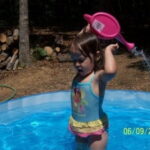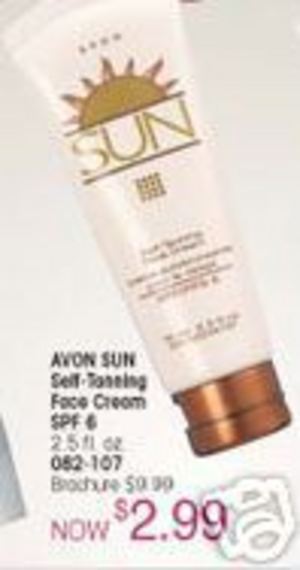As parents, summer seems easy for preschoolers. The kids can play outside any time they want, perhaps even in a kiddie pool or a sprinkler. You have planned trips to the park and maybe even a family vacation or two. You might have even gone so far as to plan some special playdates or day camps for your child to attend. You can’t imagine your child getting even the slightest bit bored.
One day, when you least expect it, it happens. Your child comes in the door and says the two most dreaded words for a parent of a preschooler. “I’m bored.” Now what do you do? With these 10 craft ideas under your belt you have nothing to worry about.
Hot Rocks
This is a great way to use up some of those old crayon scraps you have lying around your house. Search your yard, park, hiking trail, or beach for a few medium size rocks (about the size of a paperback book) with a flat surface on one side. Wash the rocks to remove all dirt, and dry well. Place the rocks in a 350 degree oven for about 15-20 minutes, or until the rocks are hot. While the rocks are heating, remove the paper from the crayons. When the rocks are hot, remove them from the oven with a hot pad or oven mitt. The rocks are hot at this point, so be extremely careful and do not leave your child unattended with the hot rocks. Use the crayons to draw and color directly on the rock while it is still hot, letting the heat melt the wax as you draw. Keep coloring for as long as you like, or as long as the wax still melts.
Sun Prints
This project revolves around construction paper’s tendency to fade in the sun. Search around your house or yard for a few items with very distinct shapes (cooking utensils, leaves, and small plastic toys work well). Lay out construction paper (either one piece for each item you found, or you can put a few items on each sheet depending on how big they are) in a sunny spot outside. You may want to put four rocks on the corners to prevent any curling. Place the items on the paper and leave in the sun for a few hours. When you return, check the paper to make sure that it has faded enough. Remove the items and enjoy your solar powered art. As an advanced variation, you and your child can each make your own separate prints and guess what items were used to make each shape when they are done.
Footprint painting
This one does require you to purchase butcher paper, or a large sheet of paper more than three feet long. Spread the paper out on the grass (or any flat surface you don’t mind getting some paint on) using rocks to hold the corners down. Put tempera paint on paper plates around the edges of the paper. Have your child remove their shoes and step into the paint, either both in the same color or each foot in a different color. Then have them walk across the paper leaving a line of painted footprints. They can experiment with different styles of walking to make different patterns. For an advanced variation, find examples of different animal footprints and help your child to recreate them in paint. Then you can compare the animal prints to your child’s and even your own.
Ice Chandelier
This requires some advance preparation. With your child, gather some items around your yard or the beach. Pinecones, leaves, small shells, rocks, and flowers work well. Place each item in a small paper cup and fill the cup with water until the item is covered completely. Place one end of a six inch piece of yarn or twine down into the water, then freeze overnight or until frozen through. While freezing, create a frame for your chandelier out of sticks or driftwood, attaching them together with wire as you would for a mobile. When everything is frozen, remove the items from their paper cups and tie them onto the frame with the yarn. Hang your chandelier in a sunny spot and watch it melt over the course of the day. This project can easily become a teaching tool if you and your child check the chandelier every hour and draw a picture (or take one with your camera) to show how it is changing.
Sidewalk Chalk Paint
Mix 1/4 cup cold water with 1/4 cup corn starch. Add food coloring to reach desired color (be careful, food coloring can leave semi-permanent stains on some surfaces, so use the smallest amount possible). Make as many colors as you have containers. Paint outside on sidewalk or driveway with paint brushes (the cement tears the bristles, so use old or cheap ones). When the paint dries it takes on a chalky appearance from the corn starch, and it washes away with the next rain or spray of the hose.
Spray Mural
Hang an old white sheet or piece of light fabric along a fence or wall of your house. Fill a variety of spray bottles and/or squirt guns with watered down tempera paint (don’t use brand new or expensive ones for this, as they may clog up after this project is done). Have your kids experiment with what spray bottle or gun works best, and which ones cover large areas vs. small. When the spraying is done, leave the fabric up to dry before taking down. The resulting art piece makes a great art tablecloth or floor covering for messy projects.
Beach Mobiles
On a trip to the beach, collect various items like shells, rocks, small pieces of driftwood, or any other items of interest you find. Also gather two or three longer pieces of driftwood or sticks to use as a frame for the mobile. Use heavy gauge wire to attach the frame pieces together. Allow your child to select a piece from their collection and decide where it should go. Work with them to find things that might balance well, and experiment with what happens when they don’t balance. Use fishing line (or twine) to attach the items to the frame.
Sand Painting
This project works best with card stock or even a small piece of plywood. You’ll also need some sand and some small beach objects you’ve found on your beach trips. Water down regular white glue until you get a paint-like consistency. On the card stock or plywood, use a marker to outline the shape or scene you want to create. Use a paintbrush to paint the glue in the outline you’ve just drawn. Spread sand over the glue (much like you would glitter) until it is completely covered. Shake off the excess sand onto a baking sheet. Glue the other beach items you found onto the scene to complete it.
Seashell Sailboats
For this one you’ll need to bring some modeling clay and small flags made from fabric or plastic to the beach with you. Collect complete shell halves and sticks from the beach. Use the modeling clay to hold the stick upright from the inside of the shell, like the mast of a sail boat. Attach your flags, and your sailboats are complete. To sail them, have your kids dig a wide hole near the water that is deep enough to collect water in. Either let the water fill naturally or bring buckets from the sea to fill it. The resulting pond makes a great place to sail your boats.
Homemade Ice Cream
OK, so it’s more of an activity than a craft, but it’s just perfect for summer. You will need 1 cup of milk (whole milk works best), 1/2 teaspoon of vanilla extract, 2 tablespoons of sugar, 1/2 cup salt (rock salt works best, but kosher salt works just fine in a pinch), 1 pint size zip top plastic storage bag, 1 gallon size zip top plastic storage bag, and some ice cubes. Fill the gallon size bag half full with ice and the rock salt, then seal the bag. Combine the milk, vanilla, and sugar in the small bag and secure closed. Open the larger bag and place the smaller bag inside; reseal the large bag. Shake and toss the bags around until the mixture hardens (it should take about 5 minutes). Take the smaller bag out of the big one, and eat the ice cream right from the bag.





